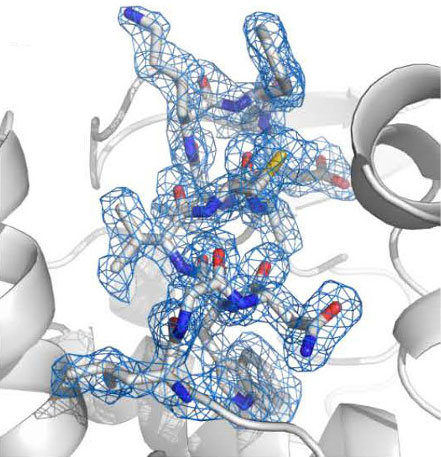 The dream of analyzing the structure of large, hard-to-crystallize proteins and other bio molecules has come one step closer to reality. In new study, researchers used a newly developed grease to suspend small crystals of lysozyme, glucose isomerase, thaumatin, and fatty acid-binding protein type-3, which they then analyzed using the revolutionary serial femtosecond crystallography method.
The dream of analyzing the structure of large, hard-to-crystallize proteins and other bio molecules has come one step closer to reality. In new study, researchers used a newly developed grease to suspend small crystals of lysozyme, glucose isomerase, thaumatin, and fatty acid-binding protein type-3, which they then analyzed using the revolutionary serial femtosecond crystallography method.
Nov 10th, 2014
Read more
 A team of engineers and scientists has identified a source of electronic noise that could affect the functioning of instruments operating at very low temperatures, such as devices used in radio telescopes and advanced physics experiments. The findings could have implications for the future design of transistors and other electronic components.
A team of engineers and scientists has identified a source of electronic noise that could affect the functioning of instruments operating at very low temperatures, such as devices used in radio telescopes and advanced physics experiments. The findings could have implications for the future design of transistors and other electronic components.
Nov 10th, 2014
Read more
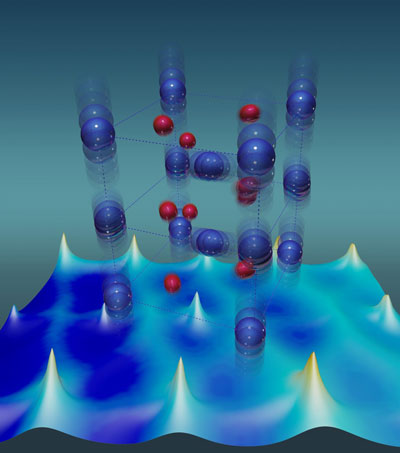 Scientists have made an important advancement in understanding a classic transition-metal oxide, vanadium dioxide, by quantifying the thermodynamic forces driving the transformation.
Scientists have made an important advancement in understanding a classic transition-metal oxide, vanadium dioxide, by quantifying the thermodynamic forces driving the transformation.
Nov 10th, 2014
Read more
Researchers have demonstrated that it is possible to directly generate an electric current in a magnetic material by rotating its magnetization. The findings reveal a novel link between magnetism and electricity, and may have applications in electronics.
Nov 10th, 2014
Read more
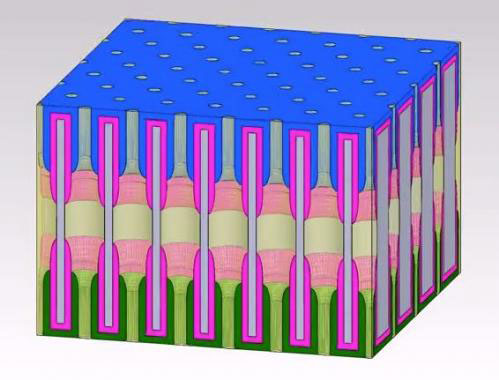 Researchers have invented a single tiny structure that includes all the components of a battery that they say could bring about the ultimate miniaturization of energy storage components.
Researchers have invented a single tiny structure that includes all the components of a battery that they say could bring about the ultimate miniaturization of energy storage components.
Nov 10th, 2014
Read more
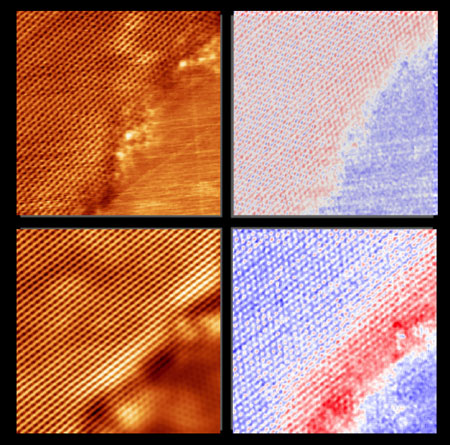 Scientists have made the first direct observations of a one-dimensional boundary separating two different, atom-thin materials, enabling studies of long-theorized phenomena at these interfaces.
Scientists have made the first direct observations of a one-dimensional boundary separating two different, atom-thin materials, enabling studies of long-theorized phenomena at these interfaces.
Nov 10th, 2014
Read more
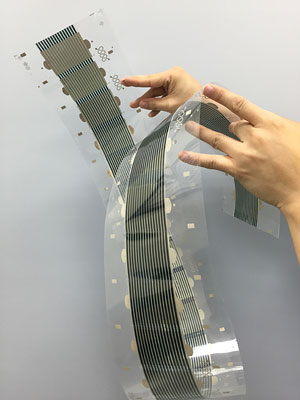 Researchers have found that temperature-controlled aggregation in a family of new semi-conducting polymers is the key to creating highly efficient organic solar cells that can be mass produced more cheaply.
Researchers have found that temperature-controlled aggregation in a family of new semi-conducting polymers is the key to creating highly efficient organic solar cells that can be mass produced more cheaply.
Nov 10th, 2014
Read more
Mike Arnold, associate professor at UW-Madison, leads a research team that focuses on the study of advanced electronic materials for photovoltaic solar energy, energy storage, and semiconductor electronics. Developing materials that can bring down the cost of PV energy is his team's passion and primary goal.
Nov 10th, 2014
Read more
Physicists have devised a theoretical model to tune the conductivity of graphene zigzag nanoribbons using ultra-short pulses.
Nov 10th, 2014
Read more
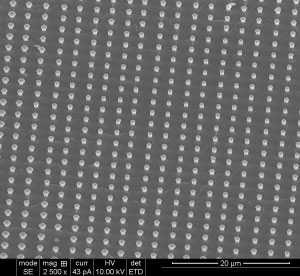 Researchers have developed a new way to grow nanowire arrays with a determined diameter, length and uniform consistency. This approach to growing nanomaterials will improve the efficiency of various devices including solar cells and fuel cells.
Researchers have developed a new way to grow nanowire arrays with a determined diameter, length and uniform consistency. This approach to growing nanomaterials will improve the efficiency of various devices including solar cells and fuel cells.
Nov 10th, 2014
Read more
Scientists have succeeded in electrochemically detecting protein binding on semiconductor materials for the first time, thanks to a newly developed investigative method based on differences in electrical charge. Now the physicists are working on an optical process to detect and localise protein binding directly under a microscope, for example, a method that could launch new applications in medical research and diagnostics.
Nov 9th, 2014
Read more
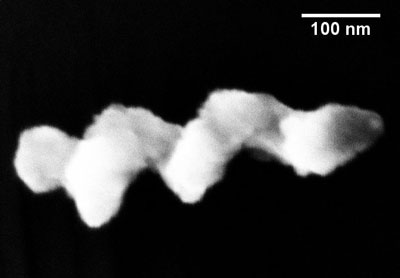 Micro- and nano-swimmers can be propelled through media similar to bodily fluids.
Micro- and nano-swimmers can be propelled through media similar to bodily fluids.
Nov 7th, 2014
Read more
New research has demonstrated how glass can be manipulated to create a material that will allow computers to transfer information using light. This development could significantly increase computer processing speeds and power in the future.
Nov 7th, 2014
Read more
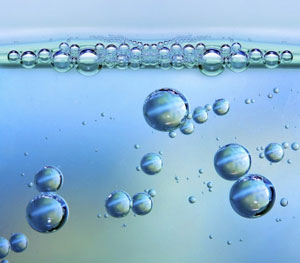 A new study reveals the need to rethink one of science's building blocks and, with it, how some of the basic principles underlying the behavior of matter are taught in our classrooms. The researchers examined the way that a phase change, specifically the melting of a solid, occurs at a microscopic level and discovered that the transition is far more involved than earlier models had accounted for.
A new study reveals the need to rethink one of science's building blocks and, with it, how some of the basic principles underlying the behavior of matter are taught in our classrooms. The researchers examined the way that a phase change, specifically the melting of a solid, occurs at a microscopic level and discovered that the transition is far more involved than earlier models had accounted for.
Nov 7th, 2014
Read more
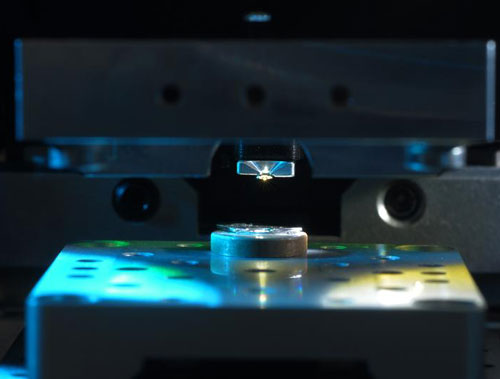 Gallium nitride is difficult to produce and difficult to handle - and the key to the development of blue LEDs, which won this year's Nobel Prize in Physics. Now, researchers and engineers around the world are working on analyzing and optimizing this material.
Gallium nitride is difficult to produce and difficult to handle - and the key to the development of blue LEDs, which won this year's Nobel Prize in Physics. Now, researchers and engineers around the world are working on analyzing and optimizing this material.
Nov 7th, 2014
Read more
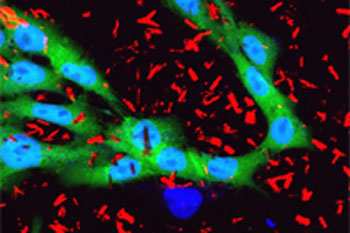 Wissenschaftler des Leibniz-Institutes f�r Photonische Technologien konnten nachweisen, dass Silizium-Nanopartikel biologisch abbaubar sind. Damit er�ffnen sich neue Anwendungsfelder in der Medizin - beispielweise in der Therapie und Diagnose von Krebs.
Wissenschaftler des Leibniz-Institutes f�r Photonische Technologien konnten nachweisen, dass Silizium-Nanopartikel biologisch abbaubar sind. Damit er�ffnen sich neue Anwendungsfelder in der Medizin - beispielweise in der Therapie und Diagnose von Krebs.
Nov 7th, 2014
Read more
 The dream of analyzing the structure of large, hard-to-crystallize proteins and other bio molecules has come one step closer to reality. In new study, researchers used a newly developed grease to suspend small crystals of lysozyme, glucose isomerase, thaumatin, and fatty acid-binding protein type-3, which they then analyzed using the revolutionary serial femtosecond crystallography method.
The dream of analyzing the structure of large, hard-to-crystallize proteins and other bio molecules has come one step closer to reality. In new study, researchers used a newly developed grease to suspend small crystals of lysozyme, glucose isomerase, thaumatin, and fatty acid-binding protein type-3, which they then analyzed using the revolutionary serial femtosecond crystallography method.










 Subscribe to our Nanotechnology News feed
Subscribe to our Nanotechnology News feed